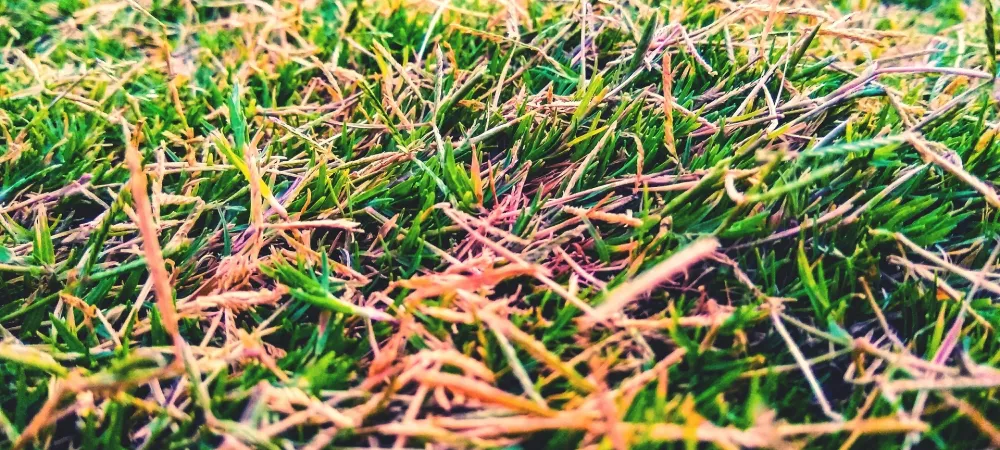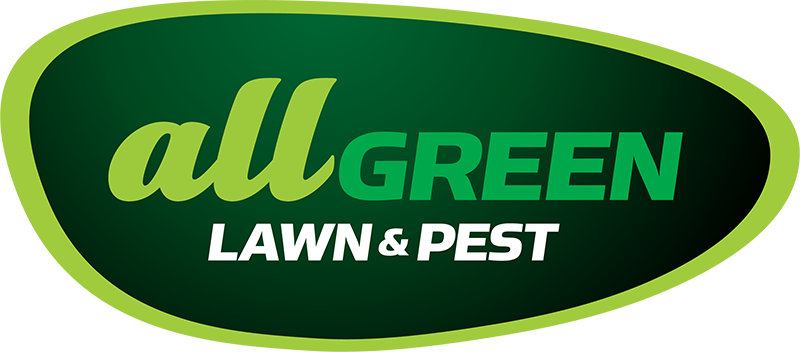Red Thread Disease in Your Lawn

If your grass in Tuttle is starting to look patchy with strange pink or red threads across the blades, there’s a good chance you’re dealing with Red Thread Disease. It’s a turf fungus that quietly creeps into lawns, often after periods of rain or moisture mixed with mild warmth. While it’s not the most damaging disease, it definitely weakens your grass and makes it look unhealthy. For homeowners trying to keep their lawns looking clean and green through the summer, seeing red is never a welcome sight.
Red Thread tends to pop up more late into summer, especially after irregular rains or high humidity stretch through the area. Tuttle lawns with lower soil nutrients or grass types like fescue can be more likely to show signs. Catching it early helps, but knowing how and why it develops is really where it starts. The better you understand what it looks like and what sets it off, the easier it becomes to prevent it down the line.
What Is Red Thread Disease?
Red Thread Disease gets its name from the pink or reddish strands that appear across your grass blades. They look like thin threads or webby fibers, often clinging to the tops of the blades and giving clumps of grass a faded, unhealthy color. From a distance, infected areas may look like oddly shaped patches of brown, tan, or dark pink turf.
This problem is caused by a fungus called Laetisaria fuciformis. It's most active in slightly cool and moist conditions, which can make late summer in Oklahoma a prime time for it to show up, especially if there have been rainstorms followed by days of lower temps. You might also notice the blades seem frayed or brittle in those spots, as though the grass is drying out from the inside.
Certain types of grass are more likely to be affected. In Tuttle, lawns with perennial ryegrass or fine fescue often show symptoms first. These grasses thrive in Oklahoma’s climate, but unless they’re kept in good shape, they can suffer when conditions turn just right for disease to take hold.
Unlike some other lawn issues, Red Thread doesn’t kill the entire area right away. But it keeps the grass from thriving, which can leave the lawn thinner, weaker, and more exposed to other problems like weeds or insect damage. Once the fungus shows up, it hangs around until something breaks the cycle.
What Triggers Red Thread Disease in Tuttle?
There are a few things that encourage Red Thread to grow, and some of them are more common in Tuttle than folks might realize. Warm days, cooler nights, and moisture build-up can give the fungus exactly what it needs. It doesn’t take much to cause a flare-up, especially if the lawn isn’t properly maintained.
Here are some typical causes to watch for:
1. Low levels of nitrogen in the soil: When grass doesn’t get enough nutrients, it becomes more vulnerable to stress and disease.
2. Too much moisture: Several days of rain, overwatering, or poor drainage can leave parts of the yard damp long after the storm.
3. High humidity: Oklahoma summers can bring thick, muggy air that keeps the grass wet, particularly in shaded spots.
4. Compacted or thatchy soil: When air and drainage are blocked, the ground stays soggy, which fungal issues love.
In neighborhoods across Tuttle, especially areas with older landscaping or minimal slope, standing water can be an issue after storms. Even small pools of water lingering around garden borders or patio edges can create the perfect condition for disease to spread out across the lawn. Without good drainage or consistent care, those spots are often the first areas to show signs of Red Thread.
Prevention and Maintenance Tips for Red Thread Disease
Keeping Red Thread Disease at bay starts with a solid lawn care routine. A healthy lawn is less likely to get hit hard by turf diseases, and that includes Red Thread. Tuttle residents can follow some basic steps to make their yards less attractive to this fungus.
1. Watering wisely: Water deeply and less often. This helps roots grow deeper without keeping the grass constantly wet. The best time to water is early morning. That gives the grass time to dry out rather than staying soaked into the evening when temperatures drop.
2. Fertilization: Keeping your grass well-fed—especially with nitrogen—makes it stronger and able to bounce back from stress. Since Red Thread shows up more often in nutrient-poor lawns, a proper fertilizer schedule goes a long way. Look for products that support steady, balanced growth through the warmer months.
3. Proper mowing: Dull blades tear the grass and leave it more open to disease. Mowing with a sharp blade and at the right height encourages stronger growth. For fescue lawns in Tuttle, that usually means cutting no shorter than 2.5 to 3 inches.
4. Improving soil conditions: If your soil is compacted, oxygen and nutrients can’t reach the roots effectively. Aerating your lawn once or twice a year can relieve this problem. It also helps reduce thatch—an overly thick layer can trap moisture and become a home for fungi.
These simple efforts can create an environment where grass grows strong and disease doesn’t find it easy to spread. Staying on a consistent lawn care schedule is key, especially during those late summer weeks when humidity and heat can flip the switch for Red Thread to appear.
Professional Lawn Care Solutions
Sometimes, no matter how careful you are, Red Thread Disease still makes an appearance. That’s where turning to professional lawn care specialists makes all the difference. They bring the know-how and tools to manage lawn diseases more effectively and with less trial and error.
1. Customized care plans: Every lawn is different. From soil quality to grass type and property layout, a one-size-fits-all approach rarely works. Lawn care pros assess your specific situation and apply treatments that are better suited to your lawn’s needs.
2. Early detection and prevention: With regular visits and trained eyes, professionals can catch signs of issues before they become full-blown problems. That early detection gives your lawn a better chance to recover quickly and stay healthy longer.
3. Better tools, better results: From fungicides to specialized equipment, lawn care teams have access to resources homeowners typically don’t. This added advantage speeds up recovery and helps get your lawn back on track before diseases take too deep a hold.
Choosing to call in help isn’t just about fixing a problem after it starts. It’s about strengthening your lawn year-round so it’s less likely to experience issues like Red Thread in the first place. With tailored support from a local specialist who understands Tuttle’s conditions, you save time while getting better results.
A Greener Lawn Starts with Smart Prevention
Red Thread Disease isn’t the deadliest fungus your lawn might face, but it still takes a toll on how healthy and lush your yard looks. In Tuttle, where weather swings and moisture patterns can shift quickly, it pays to stay one step ahead. Simple routines like proper watering, mowing, and fertilization help your grass stay strong enough to bounce back faster if something does pop up.
Working with a team that knows what to look for can be a huge stress reliever too. Whether it’s early warnings or efficient treatments, professionals bring expertise that saves you the guesswork. If you want your lawn to stay full and green through the summer and beyond, smart prevention and expert support really are the best way forward.
Ensure your grass stays healthy and free from disease by understanding what it needs to thrive. For expert care and ongoing support tailored to your lawn’s specific conditions, take a look at our approach to lawn care in Tuttle. All Green Lawn & Pest is here to help you build a thicker, greener yard that stands up to seasonal challenges. Let’s keep your lawn looking great throughout the year.
